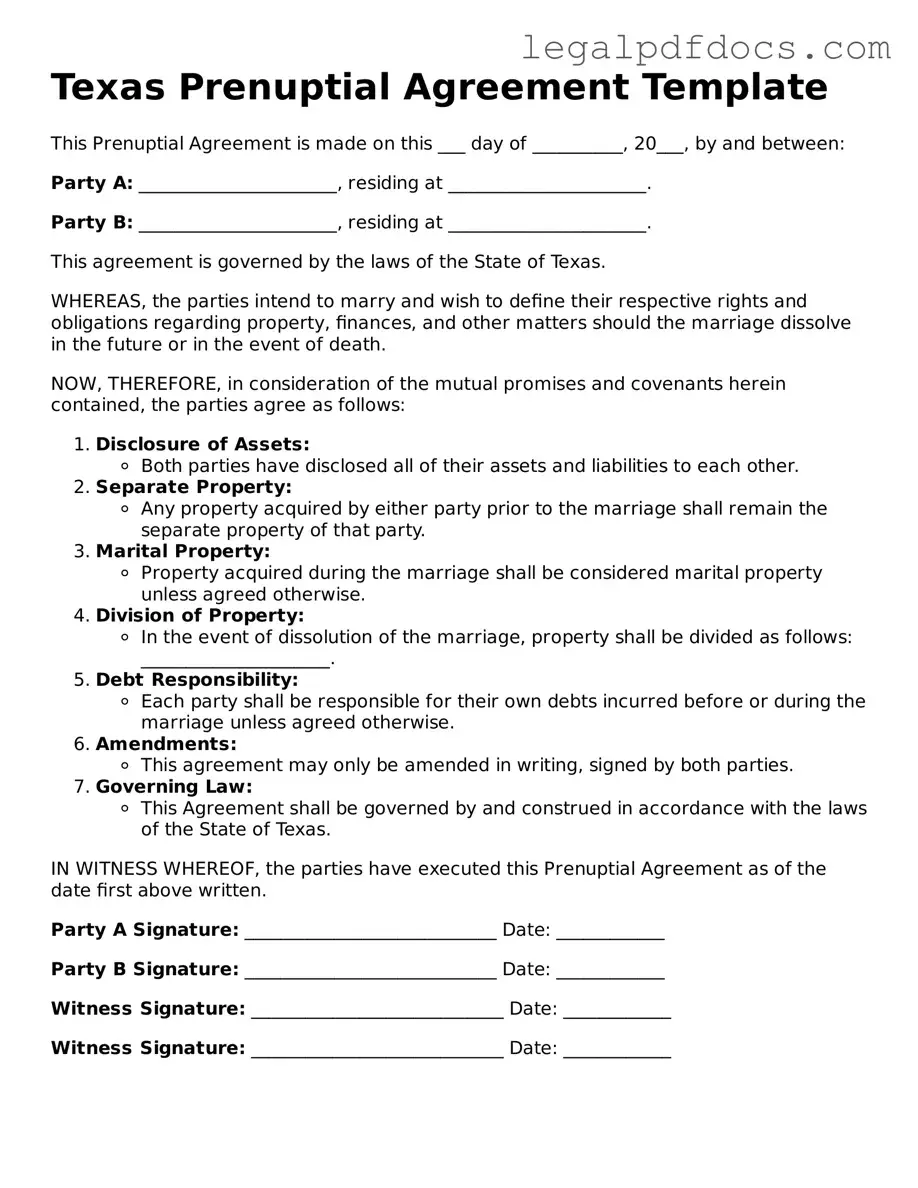Official Prenuptial Agreement Form for Texas
A Texas Prenuptial Agreement form is a legal document that outlines how assets and debts will be managed in the event of a divorce or separation. This agreement can help couples clarify their financial rights and responsibilities before tying the knot. By addressing these important matters ahead of time, individuals can foster open communication and reduce potential conflicts in the future.
Ready to take the next step in protecting your financial future? Fill out the Texas Prenuptial Agreement form by clicking the button below.
Open Prenuptial Agreement Editor Here
